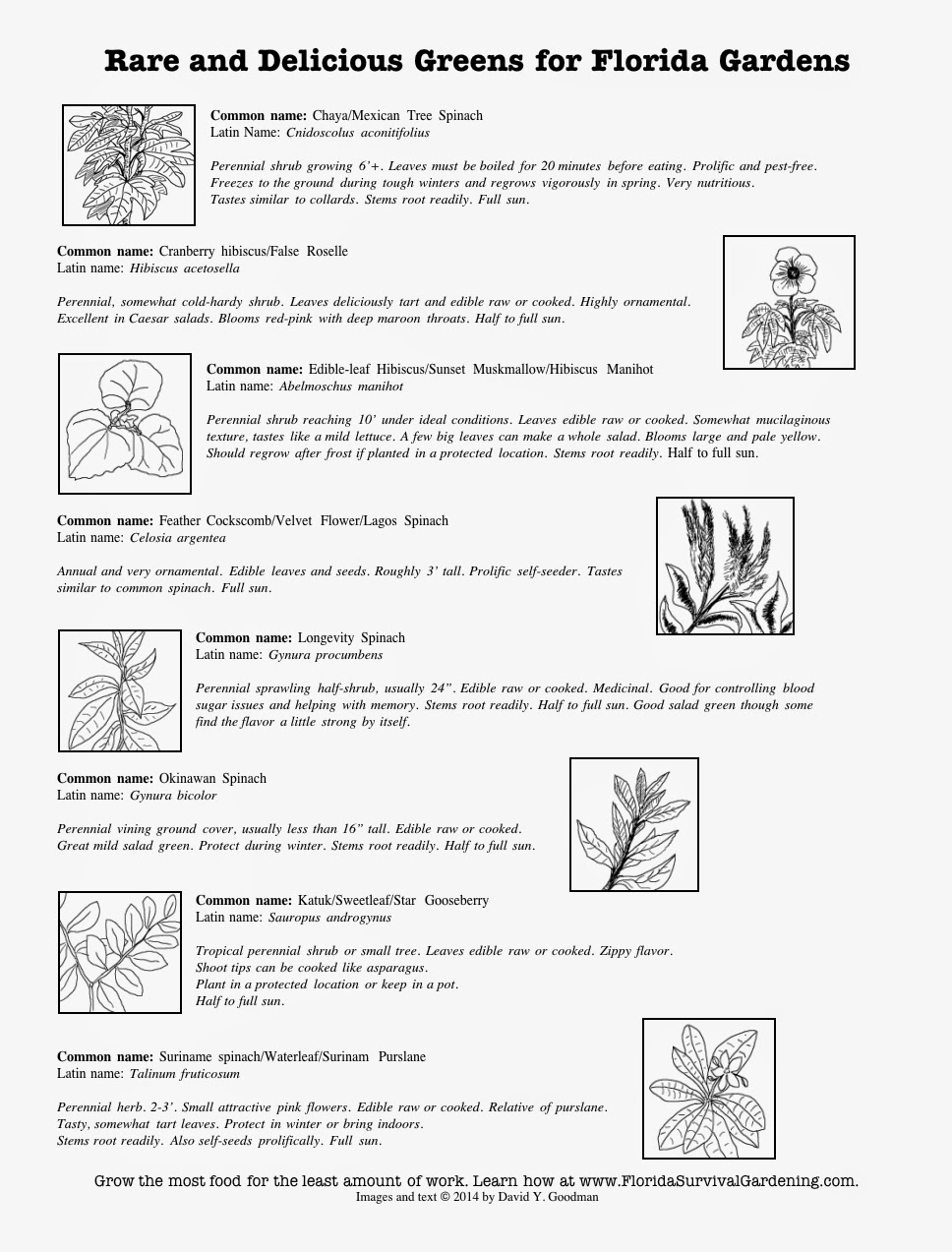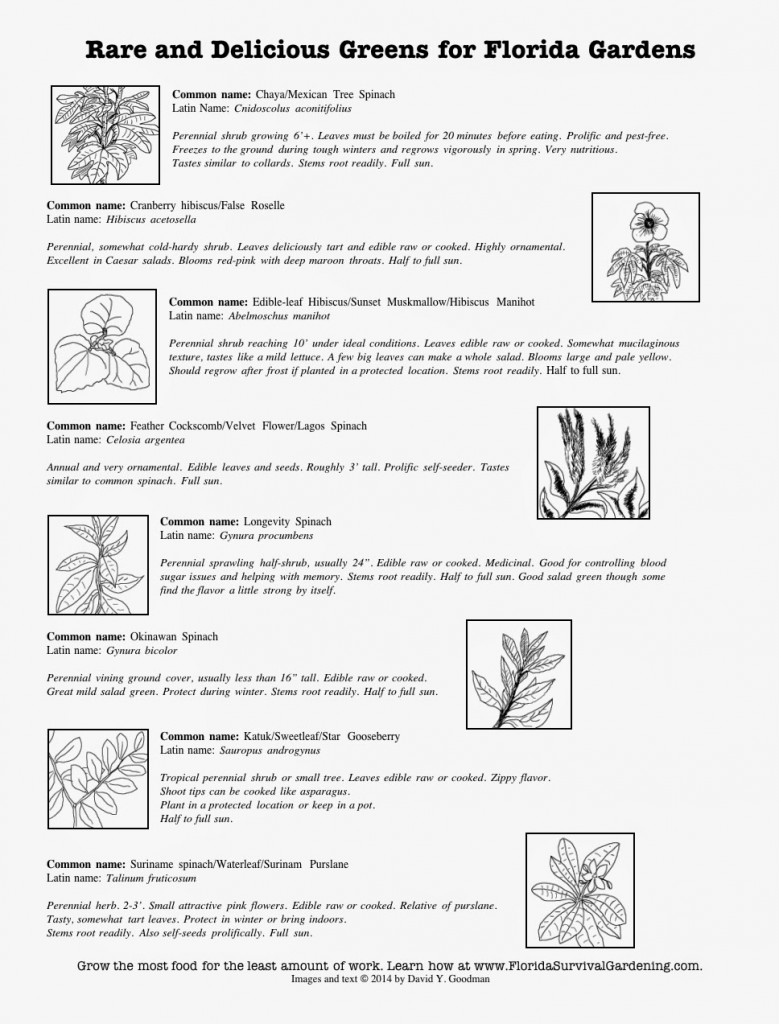Are there good Florida perennial vegetables? You bet!
Though we can’t grow lettuce through our hot summers, there are some Florida perennial vegetables and greens with great leaves that take the heat and keep on kicking.
Chaya, Cranberry Hibiscus, Hibiscus Manihot, Feather Cockscomb, Longevity Spinach, Okinawa Spinach, Katuk and Surinam Purslane are all wonderful plants – and all but one of them are perennial and it self-seeds like a boss.
I recently created a new handout on these great perennial greens for Florida. Since the info will prove useful to those of you who want salads during the blast oven of summer, I’m reproducing it here.
Hope you find it helpful.
NOTE: You can download this handout and it will be easier to read. Just drag and drop to your desktop, then you can print it. If you post it elsewhere, just link back to this site.
Florida perennial vegetables may be hard to find… but once you have them, you have them!
More Florida Perennial Vegetables
Finally, there are quite a few perennial vegetables in Eric Toensmeier’s book Perennial Vegetables that will grow in Florida – I recommend picking up a copy.



9 comments
Thanks David, this is great!!
You bet.
I am currently growing 7 of the 8 plants listed, so where can i get Lagos Spinach? I looked online, it is very elusive.
I have a bunch started and can get you one – they're the ones with the maroon and green leaves. Upright and look like an amaranth.
Gynura species have been used as vegetables for a long time in the tropics, but they are related to Senecio. I am worried about pyrolizidine alkaloids, common in that group of plants (& in Crotalarias, Eupatorium relatives, and the Borage family). Have you noticed Monarch or Queen butterflies sipping at wounded or dead foliage (milkweed butterfly males use these poisons to make a pheromone)? I guess it is all in the dose, but these alkaloids are reported as cumulative liver toxins that cause irreversible damage (which is impressive, as the liver deals with lots of junk and heals itself better than most organs). Even at small concentrations, food use (vs. say medicine) implies greater quantity thus larger doses over time. Since unlike most poisons these don’t appear to be detoxified or expelled, that scares me.
GREAT!!
Hi, David,
Thanks for the handout! I know it’s old, but you might want to tweak the information on Chaya – 1st and 2nd paragraphs conflict!
I’m so thankful for your perennial food/food forest/permaculture ideas. All my life, all I’d really seen was the “plan well” philosophy, and it paralyzed me for decades, because I’m indecisive. Now that we’re facing the NEED to grow survival food,thanks to you, last year I FINALLY decided I could “play with the plants” and gave myself room for mistakes, and even to *gasp* poke seeds and plants randomly! I have FINALLY planted some fruit and berry trees and bushes, along with other perennial edibles. Zone 10 is Paradise for all of the above!
Thank you for all the great information, for “sharing” your beautiful family, art, music – and especially God’s Truth – with us!
Blessings!
Thanks, David for your continuing information on growing in Florida. I just pulled all my longevity spinach plants as they have black spots all over the leaves. This happened once before and I took some cuttings that were not affected and replanted them. Now this has happened again and I have taken some cuttings and planted them pots. Any remedy to protect from this disease?
It seems to happen sometimes. I think it’s the cooler weather. I don’t bother treating them.
Comments are closed.